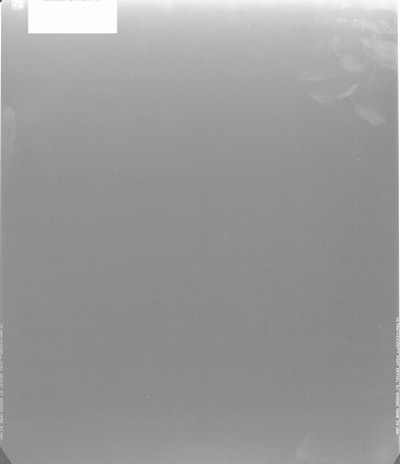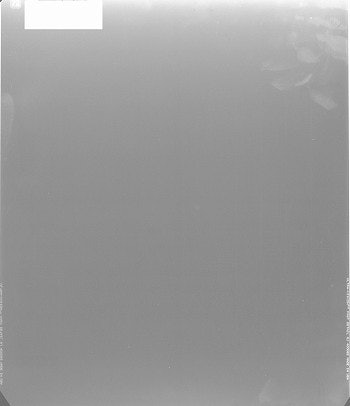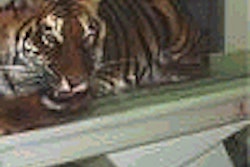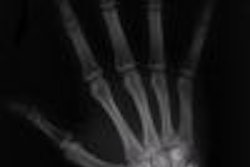
Hand lotions and other cosmetic products that contain ultraviolet (UV) protectant can leave permanent artifacts on x-ray films, according to a report published on Radiology Online. Facilities where hand-loaded book cassettes are used need to be especially careful about preventing this kind of film contamination.
Scott Cupp, a quality assurance specialist, and colleagues from Thomas Jefferson University in Philadelphia made this discovery when they found that a number of hand-loaded radiographs developed at their institution had artifacts resembling fingerprints in the corners of the images.
"It was suspected that a contaminant from the technologists’ hands was being deposited on the screens," they wrote. "Unfortunately, unless lotions containing UV protectants are immediately cleaned from the screens, the UV filters seem to penetrate beyond the topmost surface of the protective layer" (Radiology Online, February 19, 2003).
To determine the extent of the artifact phenomenon, the group tested 15 different substances, with and without UV protectant in them, on a radiographic screen (Sterling UV Fast Detail, Agfa HealthCare, Morstel, Belgium). The substances included a variety of hand lotions, betadine solution, and disinfectant spray.
All book cassettes were cleaned with intensifying screen cleaner and antistatic solution (Eastman Kodak, Rochester, NY). Images of a phantom were obtained. The pre-and post-cleaning images were viewed next to each other on a viewbox.
 |
| This radiograph was obtained with a 10 x 12-inch book cassette. The artifacts left by four fingers holding the film appear in the upper right region. Image courtesy of Scott Cupp. |
The group found that only the substances containing UV filters caused artifacts. Products that left the most well-defined artifacts had oxygenzone andoctyl methoxycinnamate in them. Substances with octyl salicylate and padimate O left fainter traces.
In terms of the penetration rate of the screen by the UV filters, those with Gd2O2S:Tb phosphor did not have permanent artifacts because of a peak emission rate above the absorption rate of UV filters. Screens with YTaO4 phosphor Ba(Sr)SO4:Eu phosphor showed UV artifacts because of peak emission rate and absorption rate overlap.
With regard to time, the group determined that the UV agent takes hold in the first 1,000 minutes; left longer on the screen, there is no additional effect.
"The use of hand lotions that contain UV protectant(s) likely caused the original artifact. The technologist would have transferred the UV protectant to the film while loading the cassette," the authors concluded. "The film was then closed in the cassette and left for a period of time, sometimes overnight. Clinics that use UV-emitting intensifying screens should be aware of this potential cause of artifacts on images obtained with hand-loaded cassettes."
Since the study was done, the imaging department has made an effort to remind RTs about the potential hazard of UV protectant transfer to film.
"After we were confident about our results, the chief technologist for the area spoke with the technologist about the risk of contamination by hand lotions, especially lotions/cosmetics that may contain UV protection," Cupp wrote in an e-mail to AuntMinnie.com. "Signs were posted reminding the techs to use exam gloves when handling the film in darkrooms that are utilized for hand-loading cassettes."
In addition, Cupp and his team now test new hand sanitizing or moisturizing lotions and towelettes before they are introduced into the imaging department, he said.
"The occurrence of this problem has significantly decreased since its initial discovery. After the initial uniformity testing of the book cassettes, there were many cassettes that were removed from clinical use because of this artifact," Cupp explained. "Since that time, I have periodically rechecked the cassettes. During some of the early rechecks, a couple more cassettes with artifacts were found and removed. Over this past year I have done a random sampling of the cassettes and have not found any new artifacts of this type that would require removing the cassette from clinical use."
By Shalmali PalAuntMinnie.com staff writer
February 26, 2003
Copyright © 2003 AuntMinnie.com


















